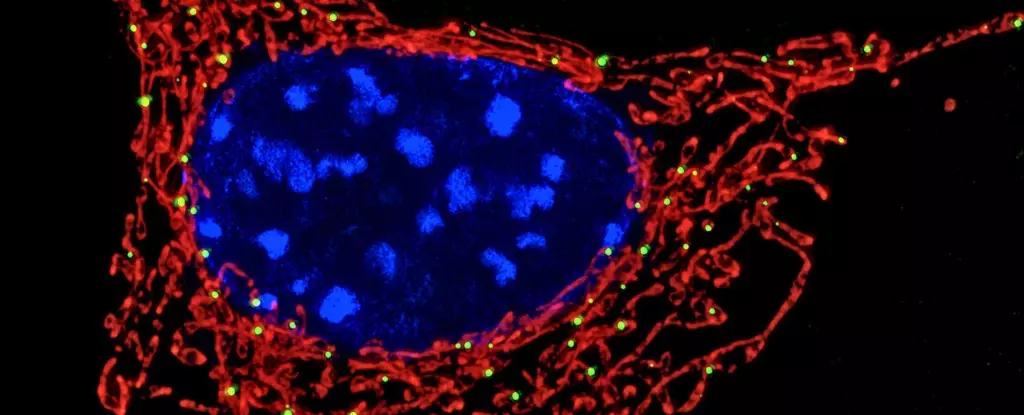Traditionally, mitochondria have been celebrated solely as the power generators of cells, fueling life by converting nutrients into usable energy. Yet, evolving research reveals a far more nuanced role for these organelles, positioning them as critical operatives in the immune system’s frontline defense. This shift challenges a long-held biomechanical dogma and compels us to reconsider mitochondria not merely as metabolic workhorses but as dynamic immune sensors, capable of directly influencing how immune cells respond to microbial threats.
The Intricacies of Neutrophil Extracellular Traps (NETs) and Mitochondrial Involvement
Neutrophils, the most populous immune cells in our bloodstream, are adept at immediate response during the body’s fight against infection. One hallmark weapon in their arsenal is the formation of neutrophil extracellular traps, or NETs—web-like DNA networks entwined with antimicrobial proteins designed to ensnare and neutralize invaders. Historically, NET formation was attributed primarily to cellular stress signals and the damage inflicted by pathogens. However, emerging discoveries spotlight mitochondria as active detectives within neutrophils, capable of identifying biochemical hints of bacterial activity and then orchestrating the deployment of these defensive nets.
One striking revelation involves the detection of bacterial lactate—a metabolic byproduct unexpectedly serving as a signal rather than a mere waste product. When bacteria are engulfed within the phagosome, a cellular compartment isolated from the cell’s interior, neutrophil mitochondria surprisingly sense the accumulation of lactate. This recognition triggers the neutrophil to strengthen its defense by casting NETs, effectively preventing bacterial escape and propagation. The autonomous bacterial metabolism thus inadvertently unmasks itself, setting off mitochondrial alarms that mobilize targeted immune actions.
Mitochondrial Communication: Breaking Cellular Boundaries
A particularly intriguing aspect of this discovery is the ability of mitochondria to detect signals emanating from bacteria trapped inside phagosomes—membranes that ostensibly separate microbial contents from the cytoplasm where mitochondria reside. This feat suggests a level of intracellular communication and sensory precision that was previously unimaginable. Rather than passively residing in the background, mitochondria actively scan for subtle metabolic cues, translating them into immune commands. Such capability accentuates mitochondria’s role as cellular intelligence hubs, integrating metabolic states and immune signaling within a single organelle.
The Immunometabolic Nexus: Mitochondria at the Crossroads of Health and Disease
This research contributes to the growing field of immunometabolism, which explores how metabolic processes inform immune functionality. The concept that immune responses are inextricably tied to cellular metabolism, rather than being independent pathways, forces a re-examination of immune dysregulation in diseases. Notably, in systemic lupus erythematosus (SLE), an autoimmune condition traditionally characterized by excessive immune activation, mitochondrial dysfunction emerges as a hidden culprit for infection susceptibility. Neutrophil mitochondria in lupus patients fail to detect bacterial lactate effectively, resulting in diminished NET formation and compromised bacterial containment. This paradox—simultaneous immune hyperactivity and vulnerability to infection—has baffled clinicians for years. The mitochondrial sensing deficiency elucidates this contradiction by highlighting how a faulty metabolic sensor can tip the delicate balance of immune responses.
Therapeutic Horizons and Potential Pitfalls
Decoding mitochondria’s expanded role opens fertile ground for novel therapeutic strategies. Enhancing mitochondrial ability to detect bacterial metabolites could strengthen host defenses in immunocompromised individuals, improving outcomes during infections. Conversely, tempering excessive NET formation might alleviate tissue damage associated with hyperactive immune responses observed in autoimmune diseases and severe inflammatory conditions like COVID-19.
However, this double-edged nature demands precision medicine rather than blunt immunomodulation. Manipulating mitochondrial signaling pathways carries the risk of disrupting essential metabolic equilibrium, potentially exacerbating pathology if not carefully controlled. Further investigation is imperative to understand the broader implications of mitochondrial immunometabolic functions across different immune cell types and microbial contexts.
Looking Forward: Expanding the Frontier of Immune Metabolism
This mitochondrial perspective profoundly alters our understanding of host-pathogen interaction. The notion that bacterial byproducts serve as immune “language” sensed by mitochondrial receptors paves the way to identifying new immunological codes embedded in microbial metabolism. Future research may uncover whether similar mechanisms exist in other immune cells, broadening the scope of how the immune system integrates metabolic signals to tailor its response.
Moreover, this insight ignites curiosity about the potential to modulate immune function with metabolic interventions—targeting not just pathogens directly but the very biochemical conversations that awaken immune cells. Such an approach could revolutionize how infections and immune disorders are managed, heralding an era where metabolism and immunity are treated as deeply interwoven facets of human health.
Mitochondria are no longer simply the cell’s powerhouses—they have emerged as vigilant sentinels and sophisticated communicators, orchestrating the immune defense with precision and nuance that we are just beginning to appreciate.


Leave a Reply